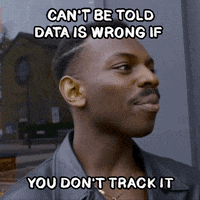
How to build, launch, and grow your next project
Big tips on how to build, launch, and grow your next project and a to-do list so you can follow along and make sure you're doing everything right.
- Last updated
Article overview
- 1. Identify Your Target Audience 👥
- 2. Discover Where Your Audience Hangs Out 🌍
- 3. Set Up Analytics with Posthog 📈
- 4. Engage Through Email Marketing with Email Octopus 📧
- 5. Implement a Payment System with Lemon Squeezy 💳
- 6. Understanding User Intent: A Key to Enhancing Product Engagement
- 7. Launch on Product Hunt 🐱
- Additional Resources and Strategies
Starting a new project can be hard, but with the right strategy and tools, it's definitely achievable. Here are comprehensive steps to guide you through building, launching, and growing your project effectively.
1. Identify Your Target Audience 👥
Knowing who you're building for is crucial. Initially, your product might seem suitable for a broad audience, but narrowing it down to specific groups like product managers, sales professionals, or content creators will streamline your focus and make subsequent steps more effective.
2. Discover Where Your Audience Hangs Out 🌍
Locate your audience's favorite platforms, such as Twitter/𝕏, Reddit, Facebook, or Slack groups. Engage with them by offering interviews to understand their needs and workflows, thus subtly introducing your solution. Documenting these interactions in a detailed sheet is key, as these individuals will become your product's early champions.
3. Set Up Analytics with Posthog 📈
Analytics are essential for understanding user engagement and channel effectiveness. Posthog is invaluable for tracking website and product events, offering insights that help refine your Product-Led Growth (PLG) strategy and identify areas for improvement.
4. Engage Through Email Marketing with Email Octopus 📧
Once potential users show interest, engage them with emails for updates or major news. Email Octopus is recommended for its cost-effectiveness and automation capabilities, facilitating seamless onboarding flows and ongoing communication.
5. Implement a Payment System with Lemon Squeezy 💳
Setting up a reliable payment system is crucial for monetization. Lemon Squeezy is praised for its ease of setup and customization options. Explore community resources for tips on making the most of your payment system.
6. Understanding User Intent: A Key to Enhancing Product Engagement
When developing a product, a crucial aspect often overlooked is the user's activity before they engage with your application. Identifying this pre-engagement behavior can unlock significant opportunities to enhance usability and increase adoption rates.
This approach prompts a critical question for developers: What are your users doing before they turn to your product? Understanding this can guide you in making your product not just a tool but a seamless part of your users' workflow, enhancing its relevance and utility.
Identifying these pre-engagement actions not only clarifies your product's place in the user's life but also opens avenues for innovative features and use cases, making your product indispensable.
7. Launch on Product Hunt 🐱
Product Hunt is a pivotal platform for product visibility and feedback. In the weeks leading up to your launch, prepare your audience and foster discussions that will support your debut. Understanding and engaging with the Product Hunt community can significantly boost your launch day success.
Additional Resources and Strategies
Expand Your Reach: Beyond Product Hunt, consider listing your product on directories like DevHunt, CtrlAltCC, Uneed, IndieHackers, Desk Investor and @hunteddotspace for broader exposure.
SEO and Backlinks: These efforts will naturally enhance your SEO strategy, attracting more users to your site through organic search.
Continuous Engagement: Keeping your audience informed and engaged through various channels will maintain interest and support for your project.
By following these detailed steps, you position your project not just for a successful launch but for sustained growth and engagement. Each phase, from audience identification to the launch and beyond, is designed to build a solid foundation and foster a thriving community around your product. Remember, success is a journey that requires constant learning, adaptation, and engagement with your audience.
To-do List
Determine who your primary users will be.
Narrow down to specific groups like product managers, sales professionals, or content creators.Find out the platforms your target audience prefers (Twitter, Reddit, Facebook, Slack).
Offer to interview them to understand their needs and workflows.
Document these interactions in a detailed sheet.Implement Posthog for tracking website and product events.
Analyze data to refine your Product-Led Growth (PLG) strategy.Use Email Octopus for sending updates and major news to interested users.
Set up automated onboarding flows and ongoing communication.Choose Lemon Squeezy for your product’s payment system.
Customize and optimize based on community tips and resources.Consider what actions users take before engaging with your product.
Integrate findings to make your product a seamless part of the user's workflow.Prepare your target audience for the Product Hunt launch.
Engage with the Product Hunt community to boost launch day success.List your product on additional directories like StartupStage and HuntedSpace.
Implement strategies to enhance your SEO and attract organic search traffic.
Keep your audience informed and engaged across various channels.